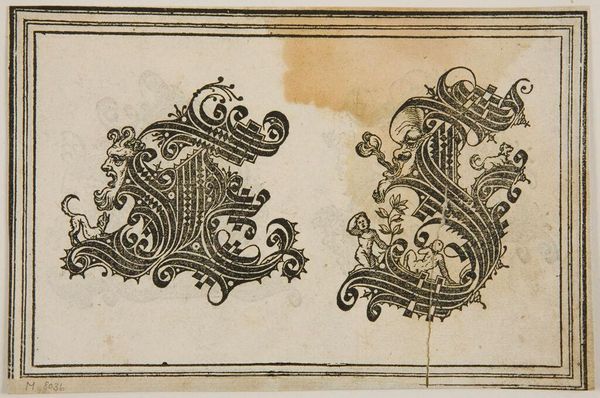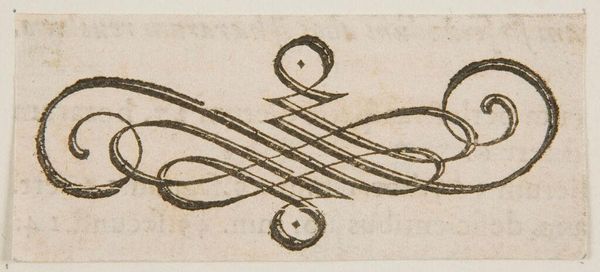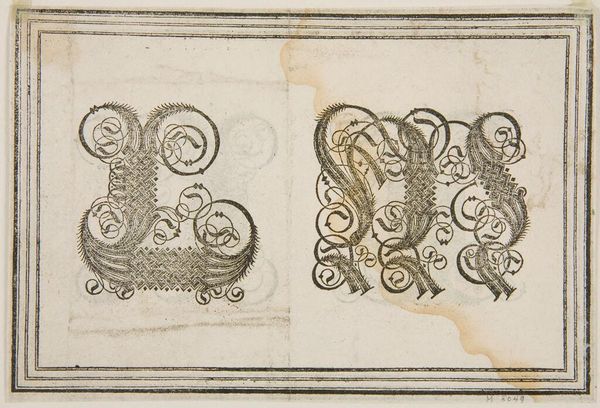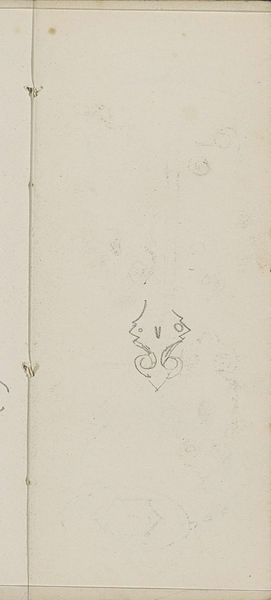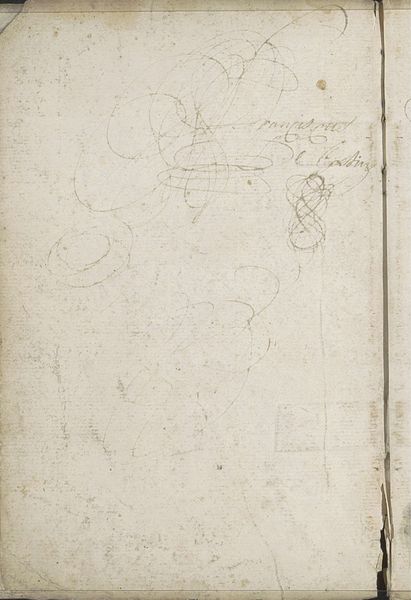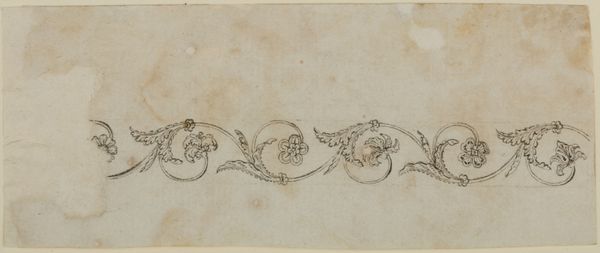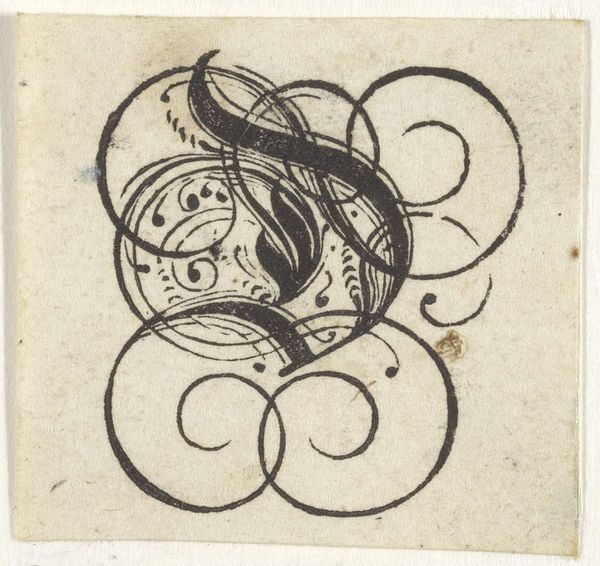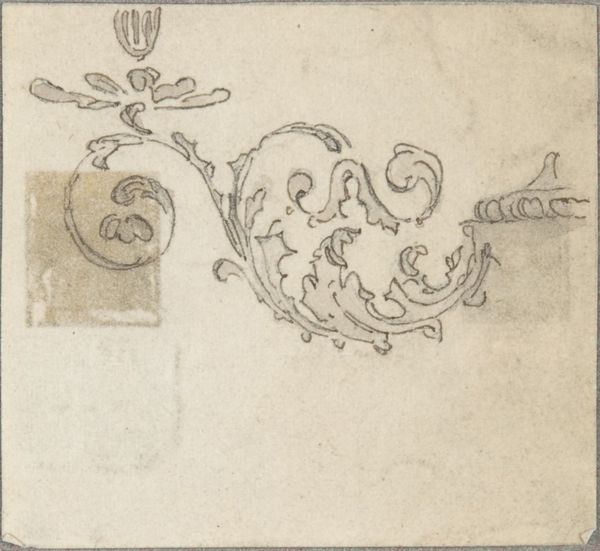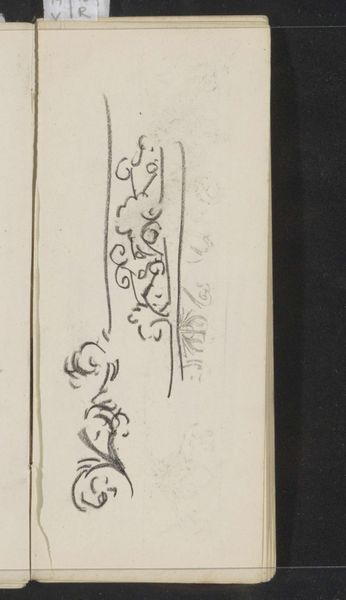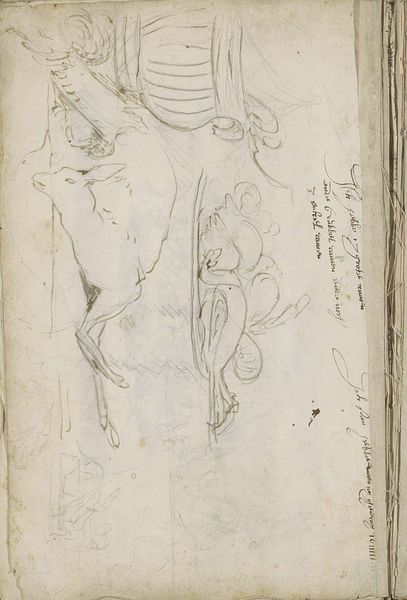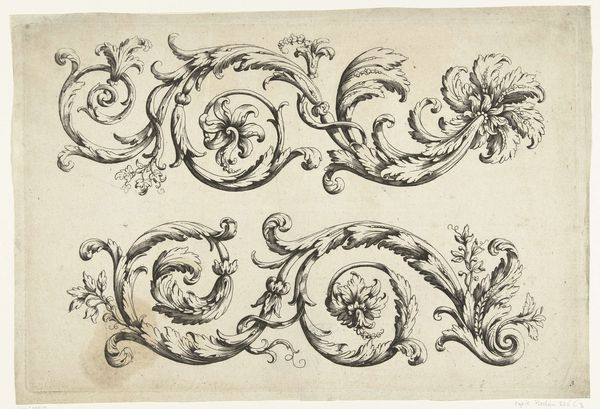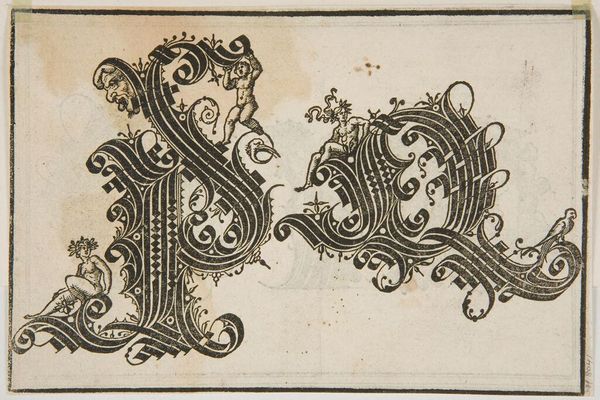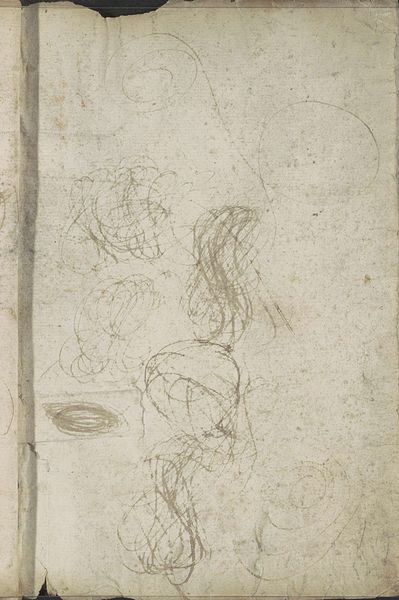
drawing, paper, ink
#
drawing
#
script typography
#
hand-lettering
#
old engraving style
#
hand drawn type
#
hand lettering
#
paper
#
personal sketchbook
#
ink
#
hand-drawn typeface
#
geometric
#
sketchbook drawing
#
sketchbook art
#
calligraphy
#
small lettering
Dimensions: height 40 mm, width 41 mm
Copyright: Rijks Museum: Open Domain
Curator: Here we have a piece called "Vignet met drie dezelfde monogrammen," created by Isaac Weissenbruch between 1836 and 1912. It's a drawing made with ink on paper, and it’s part of the Rijksmuseum's collection. Editor: My first impression is that it's quite intimate, like peering into the artist's personal sketchbook. It almost feels like a secret code, those elegant, looping initials. Curator: It's interesting you say that. These types of vignettes were often used in printing and publishing. So while the artist's hand is evident, there's a relationship here to the broader systems of image distribution at the time. Think about how graphic design and printing democratized art by making images accessible to wider audiences. Editor: Absolutely, and that mass dissemination also implies a relationship to labor and craftsmanship. Who was producing this, for what purpose, and how did it fit into the larger production of printed materials? Was this a study piece leading to mass-produced ephemera, and how might those class factors determine reception of the artistry itself? Curator: It pushes us to consider how we classify 'high art' versus functional design or 'craft.' The artist had to master very particular physical skills – the precise application of ink, the control of the hand to render those flourishes consistently, if they wanted to later upscale production. Editor: I agree completely. And thinking historically, the proliferation of printed materials during Weissenbruch’s time fueled literacy and the circulation of ideas. To create beautiful design at scale serves social communication aims. Curator: So, this modest drawing offers insight into artistic intention, printing industry labor practices, and potentially broader societal trends. It encourages us to expand what is art and also reflect on production methods. Editor: Right, I leave this with a changed perspective on the power that small design elements exert within broader social communication contexts. Curator: Yes, from its role as a tiny contribution, one among countless pieces used within larger artistic structures to influence meaning far outside any single component of itself.
Comments
No comments
Be the first to comment and join the conversation on the ultimate creative platform.
